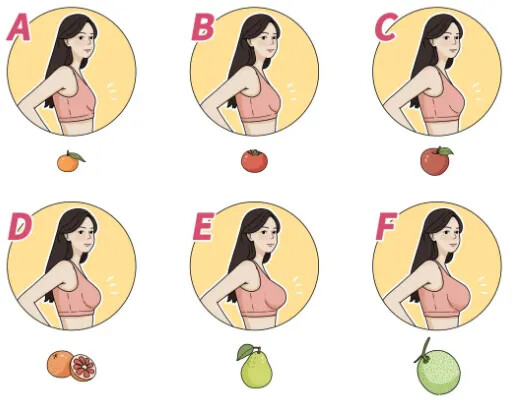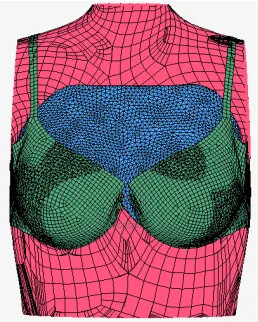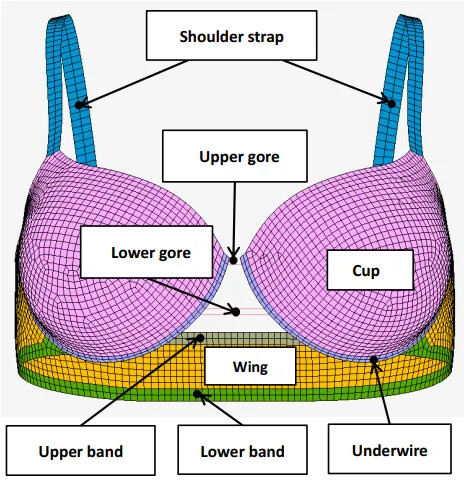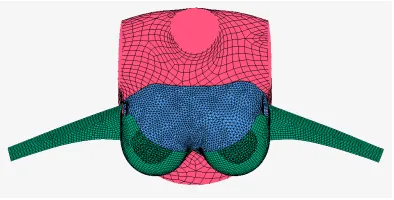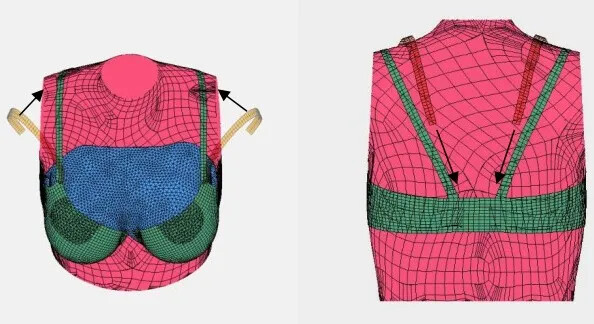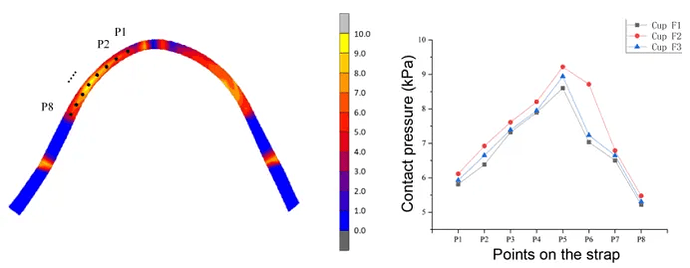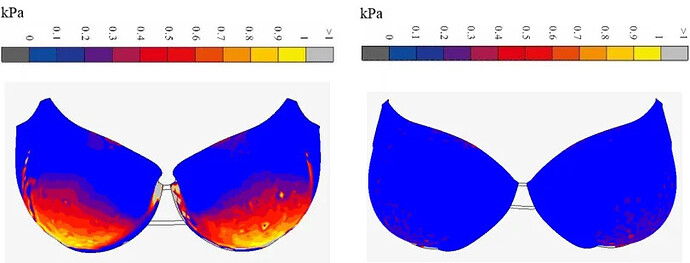In today’s world, where fashion and comfort go hand in hand, bras, being an essential part of women’s daily wear, are receiving increasing attention when it comes to design and selection. Today, let’s use CAE (Computer-Aided Engineering) simulation technology to uncover the secrets of choosing the right bra for different bust sizes.
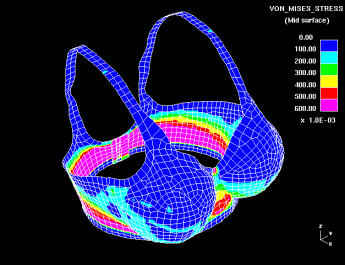
Bra Stress Distribution Map
CAE simulation technology plays an increasingly important role in bra design and optimization. It can be used to simulate the interaction between the bra and the body, predict the fit and comfort of the bra, and provide a theoretical basis for personalized bra customization.
The Struggles of Women with Larger Busts: A Pain You’ll Never Understand
A human-bra coupling contact model is established, and model parameters such as material properties, mesh division, and boundary conditions are adjusted to ensure model accuracy and computational efficiency. The specific steps are outlined below.
Bra-Breast Coupling Contact Model
Step 1: Construct the Geometric Model
3D data of the human body is obtained using imaging technologies such as CT (Computed Tomography) and MRI (Magnetic Resonance Imaging), including clear details of the skeletal structure, soft tissue thickness, and organ shapes.
Step 2: Bra Material Properties
The material properties of the bra significantly affect its comfort. By understanding the elastic modulus, Poisson’s ratio, and stress-strain relationships of common bra materials (such as elastic fibers, cotton, etc.), a CAE simulation model can be accurately established.
Step 3: Mesh Division
Typically, the bra is treated as a 2D shell element with quadrilateral units, and the mesh size is set between 0-5 mm. The breast is treated as a 3D shape with tetrahedral or hexahedral units, and the mesh size is generally set between 0-10 mm.
Step 4: Define Contact Relationships
The contact bodies are the bra and the human body. The contact type is face-to-face contact, with the bra straps and under-band being defined as binding constraints. When the bra and body make contact, friction occurs with a friction coefficient of 0.2.
Step 5: Apply Boundary Conditions
Based on a gravity-free breast and an unstressed bra, the loads and boundary conditions during their interaction are determined. Constraints are applied to the inner surface of the bra, with spring units applied to both ends of the connection, simulating the process of fastening the bra.
Step 6: Simulate for Different Bust Sizes
The inner diameter is defined as a variable, and the simulation is run for various bust sizes to analyze the stress distribution, deformation, and fit indicators of the bra. This helps assess the comfort and adaptability of the bra, providing guidance for choosing the right one.
Step 7: Personalized Customization
By comparing the simulation results of bras for different bust sizes, the effect of bust size on bra comfort and fit is analyzed. The relationship between bust size and bra design parameters is identified, offering guidance for personalized bra design.
With the continuous advancement of technology, CAE simulation is expected to play a larger role in bra design and manufacturing. It will help explore the relationship between bra design and human physiological characteristics, further driving the personalized development of the bra industry.
References:
[1] 3D Bra and Human Interactive Modelling Using Finite Element Method for Bra Design.
[2] Finite Element Analysis on Contact Pressure and 3D Breast Deformation for Application in Women’s Bras.
